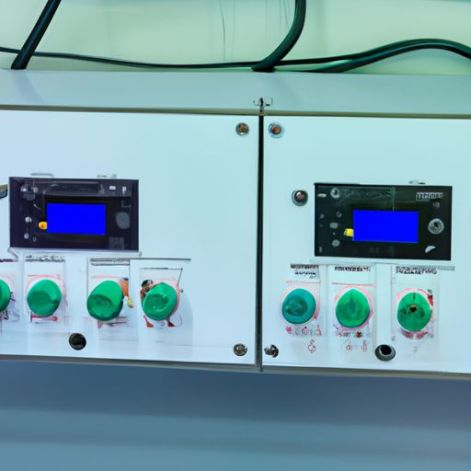Table of Contents
Benefits of Dual Power Supply Automatic Control Transfer for Uninterrupted Power
In today’s fast-paced world, uninterrupted power supply is crucial for businesses and individuals alike. Any interruption in power can Lead to significant financial losses, data corruption, and inconvenience. This is where dual power supply automatic control transfer systems come into play. These systems ensure seamless power transfer from one source to another in the event of a power outage, ensuring uninterrupted power supply to critical equipment and systems.
One of the key benefits of dual power supply automatic control transfer systems is their ability to switch between power sources in milliseconds. This rapid switching ensures that there is no interruption in power supply, even during a sudden power outage. This is especially important for businesses that rely on continuous power supply to operate smoothly and efficiently. With a dual power supply automatic control transfer system in place, businesses can rest assured that their operations will not be disrupted by power outages.
Another benefit of dual power supply automatic control transfer systems is their ability to handle high power loads. These systems are available in various capacities, ranging from 63A to 100A, making them suitable for a wide range of applications. Whether you need to power a small office or a large industrial facility, dual power supply automatic control transfer systems can meet your power requirements without any issues.
Furthermore, dual power supply automatic control transfer systems are designed to be reliable and efficient. These systems are equipped with advanced technology that ensures smooth and seamless power transfer between sources. This reliability is crucial for businesses that cannot afford any downtime due to power outages. With a dual power supply automatic control transfer system in place, businesses can minimize the risk of power-related disruptions and ensure continuous operation of critical equipment.
In addition to their reliability and efficiency, dual power supply automatic control transfer systems are also easy to install and maintain. These systems are designed to be user-friendly, with intuitive interfaces that make them easy to operate. This means that businesses can quickly set up and configure their dual power supply automatic control transfer systems without the need for extensive training or technical expertise. Furthermore, these systems require minimal maintenance, reducing the overall cost of ownership and ensuring long-term reliability.
Overall, dual power supply automatic control transfer systems offer a range of benefits for businesses and individuals looking to ensure uninterrupted power supply. From rapid switching times to high power load handling capabilities, these systems are designed to meet the diverse needs of modern power users. With their reliability, efficiency, and ease of installation, dual power supply automatic control transfer systems are an essential investment for anyone looking to safeguard their operations against power outages.
Comparison of 63A and 100A Switches for Millisecond Class Switching Without Interruption
In the world of power supply management, ensuring uninterrupted power is crucial for the smooth operation of various systems and equipment. Dual power supply automatic control transfer switches play a vital role in this process, allowing for seamless switching between power sources in the event of a failure. When it comes to millisecond class switching without interruption, the choice between a 63A and 100A switch can make a significant difference in the efficiency and reliability of the system.
The primary function of a dual power supply automatic control transfer switch is to automatically transfer the load from the primary power source to a secondary source in the event of a power outage or failure. This ensures that critical systems remain operational without any interruption in power supply. The speed at which this transfer occurs is crucial, especially in applications where even a brief interruption can have serious consequences.
When comparing a 63A and 100A switch for millisecond class switching without interruption, the main difference lies in the maximum current capacity that each switch can handle. The 63A switch is designed to handle a maximum current of 63A, while the 100A switch can handle up to 100A. This means that the 100A switch is capable of handling a higher load, making it suitable for applications where a higher current capacity is required.
In terms of switching speed, both the 63A and 100A switches are designed to provide millisecond class switching without interruption. This means that the transfer of power from the primary to the secondary source occurs within milliseconds, ensuring that critical systems remain operational without any downtime. The high-speed switching capability of these switches is essential in applications where even a brief interruption in power supply can have serious consequences.
 Another factor to consider when choosing between a 63A and 100A switch is the size and cost of the switch. The 100A switch is larger and more expensive than the 63A switch, due to its higher current capacity. However, the higher cost may be justified in applications where a higher current capacity is required to ensure the smooth operation of critical systems.
Another factor to consider when choosing between a 63A and 100A switch is the size and cost of the switch. The 100A switch is larger and more expensive than the 63A switch, due to its higher current capacity. However, the higher cost may be justified in applications where a higher current capacity is required to ensure the smooth operation of critical systems.
In conclusion, when it comes to millisecond class switching without interruption, both the 63A and 100A switches are capable of providing the high-speed switching required to ensure uninterrupted power supply. The choice between the two switches will depend on the specific requirements of the application, with the 100A switch being suitable for applications where a higher current capacity is needed. Ultimately, both switches play a crucial role in ensuring the reliability and efficiency of power supply management systems.
